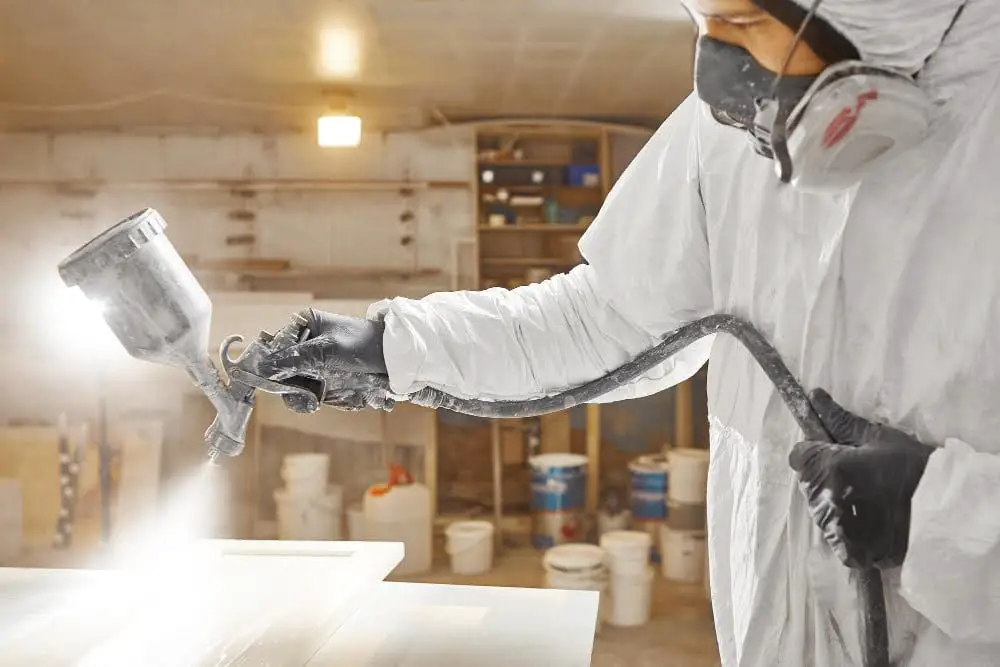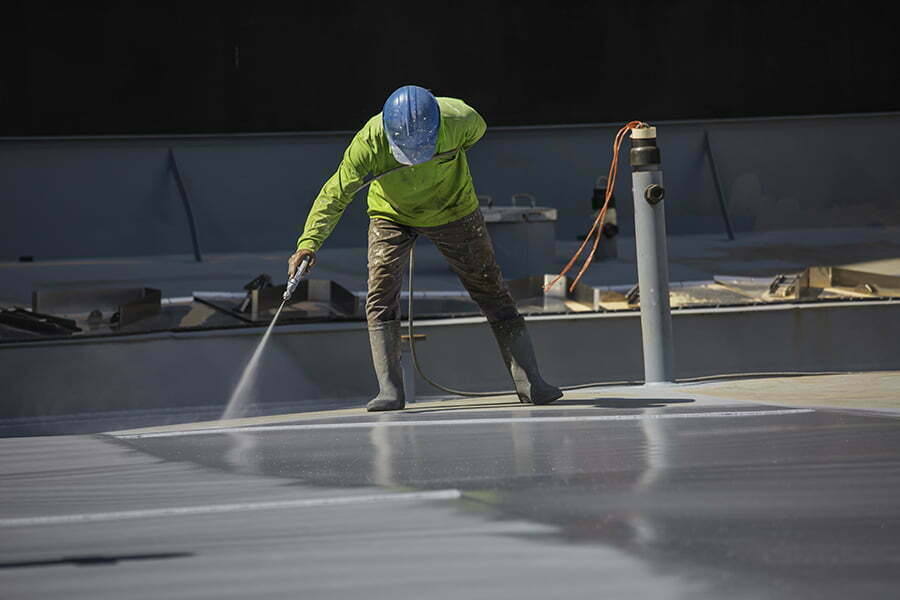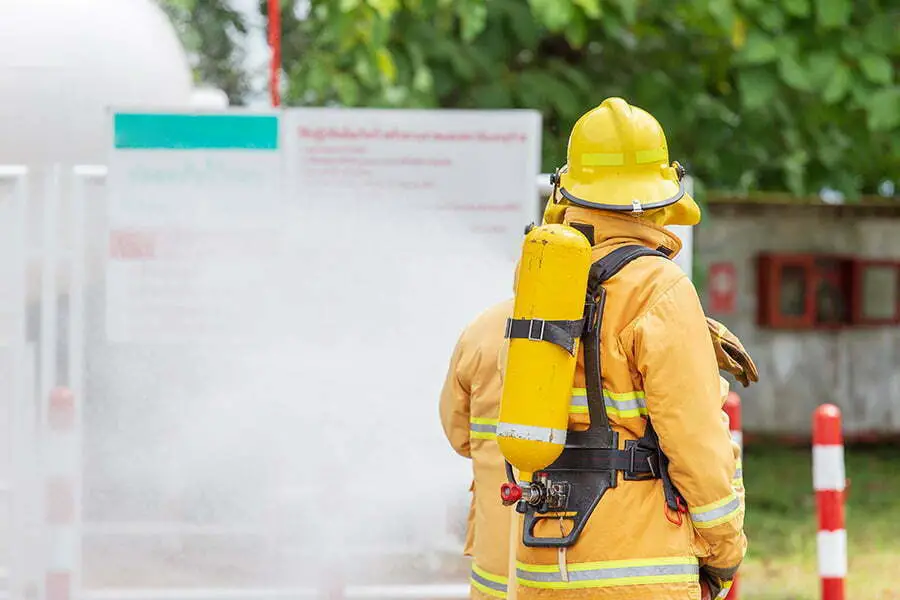Learn how fire-retardant polymer coatings can significantly improve building safety by reducing the risk of fires and minimizing damage in case of one.
Fire-retardant polymer coatings coatings are designed to enhance fire safety in building design by slowing down or even preventing the spread of flames.
In this blog post, we’ll take a closer look at what fire-retardant polymer coatings are and how they work. We’ll also explore some common misconceptions about these coatings and explain why they are such an important tool for enhancing fire safety in building design.
So let’s get started!
Fire-Retardant Polymers: An Overview

Fire-retardant polymers are a type of material that has been treated with chemicals to make them resistant to fire. These coatings can be applied to a wide range of materials, including wood, metal, and plastic.
When exposed to heat or flames, the coating forms a protective layer that helps prevent the spread of fire.
One reason why these coatings are so effective is because they work by interrupting one or more stages of the combustion process. For example, some types of fire-retardant polymers release water vapor when exposed to heat or flames; this vapor cools down nearby surfaces while also diluting flammable gases released during combustion.
Other types may produce charred residue when heated up which acts as insulation against further burning thereby slowing down flame propagation across surfaces coated with such materials.
In addition to preventing fires from spreading quickly through buildings (which gives occupants time for safe evacuation), using these materials can also reduce damage caused by smoke inhalation since less toxic fumes will be produced during any potential blaze.
Types of Fire-Retardant Coatings

There are several types of fire-retardant coatings available in the market, each with its own unique properties and applications. Some of the most common types include intumescent coatings, cementitious coatings, and ablative coatings.
Intumescent coatings are perhaps the most widely used type of fire-retardant coating. These specialized paints contain chemicals that react to heat by expanding rapidly to form a thick layer of foam-like insulation over surfaces such as steel beams or wooden walls.
This expanded layer helps to insulate against heat transfer while also slowing down or preventing flames from spreading.
Cementitious fire-retardant coatings consist mainly of cement mixed with other materials such as fibers or fillers that enhance their thermal resistance properties. They can be applied directly onto concrete surfaces for added protection against fires.
Ablative fire retardants work differently than intumescent and cementitious ones; they release gas when exposed to high temperatures which creates a protective barrier between the surface being protected and flames/heat source.
By using these different types of polymer-based flame retardants in building design, we can significantly reduce risks associated with fires breaking out within buildings – something I wish had been more prevalent during my childhood years!
Application in Building Design

Fire-retardant polymer coatings are an essential component of building design, particularly in structures where fire safety is a top priority. These coatings can be applied to a wide range of surfaces, including wood, steel, concrete and even fabrics.
In my years as an expert in the construction industry, I have seen firsthand how these coatings can make all the difference when it comes to preventing fires from spreading.
By slowing down or even stopping flames from spreading across surfaces that would otherwise fuel them further – such as wooden beams or fabric curtains – fire-retardant polymer coatings give firefighters more time to contain and extinguish fires before they become uncontrollable.
But while these coatings are incredibly effective at enhancing fire safety in building design, there are still some misconceptions about their use. Some people believe that applying these types of products will compromise the aesthetic appeal of a structure or add unnecessary costs to construction projects.
However, this couldn’t be further from the truth! Fire-retardant polymer coatings come in many different forms and finishes – some transparent – so they won’t detract from your desired look for your project’s interior design.
Additionally investing on this type coating during initial stages could save you money by reducing potential damage caused by future fires which may lead into costly repairs if not prevented beforehand.
Performance and Testing Standards

To ensure that fire-retardant polymer coatings are effective in enhancing fire safety, they must meet certain performance and testing standards. These standards are set by organizations such as the National Fire Protection Association (NFPA) and Underwriters Laboratories (UL).
As a young boy, I never would have imagined that there were organizations dedicated to setting these types of safety standards. But now, as an expert in the construction industry, I understand just how important it is to have these guidelines in place.
The NFPA sets codes and regulations for building design with regards to fire prevention measures. UL tests products for their ability to resist or slow down fires under various conditions before granting them certification.
When it comes specifically to fire-retardant polymer coatings, there are several tests that must be passed before they can be deemed effective at enhancing fire safety. These include flame spread rating tests and smoke development rating tests.
By meeting these rigorous performance and testing standards set forth by reputable organizations like the NFPA and UL, we can trust that our buildings will be safer from potential fires thanks to properly applied flame retardants on surfaces throughout structures – including walls ceilings floors doors windows etcetera!
Environmental Impact and Sustainability

As someone who cares deeply about the environment, I understand that any solution we implement in building design must also be sustainable. Fortunately, fire-retardant polymer coatings are not only effective at enhancing fire safety but are also environmentally friendly.
These coatings are made from non-toxic materials and do not release harmful chemicals into the air or water supply. They can be applied to a wide range of surfaces without causing damage or requiring extensive preparation.
In fact, some types of fire-retardant polymer coatings have been shown to improve energy efficiency by reducing heat transfer through walls and roofs. This means that buildings with these coatings require less energy for heating and cooling, resulting in lower utility bills and reduced carbon emissions.
By incorporating sustainable solutions like fire-retardant polymer coatings into building design practices, we can enhance both safety and environmental responsibility. It’s a win-win situation for everyone involved – from builders to occupants – as well as our planet!
Cost-Effectiveness Analysis

While fire-retardant polymer coatings are an effective tool for enhancing fire safety in building design, some may wonder if they are cost-effective. After all, adding another layer of protection to a building can increase construction costs.
However, when considering the potential cost of a devastating fire and the loss of life and property that could result from it, investing in these coatings is well worth it.
Incorporating these coatings into building designs has saved lives and prevented catastrophic damage. The added expense during construction is minimal compared to what could be lost without them.
In fact, many insurance companies offer discounts for buildings with fire-retardant polymer coatings because they recognize their effectiveness in reducing risk. Some local governments require certain types of buildings (such as schools or hospitals) to use these materials due to their proven track record in preventing fires from spreading.
Overall when weighing up the benefits versus costs associated with using Fire-Retardant Polymer Coatings we can see that not only do they enhance safety but also provide long-term savings by mitigating risks associated with fires which makes them a smart investment choice for any builder or developer looking towards future-proofing their projects against unforeseen events such as fires while ensuring maximum protection at minimum cost possible!
Recap




